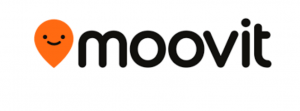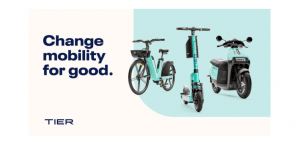Monday, March 21, 2022 | Written by Claire
Free Mobile is going to be your best bet for a reliable phone plan during your time at GTL. If you’re debating on using your current international data and call plan, you may want to reconsider after hearing about what Free Mobile has to offer.
There are several things you should keep in mind when choosing your phone plan. You will be traveling across the EU during your time at GTL, especially with your Eurail Pass.
Free mobile has been heavily reliant and can make calls for a few cents during emergencies. They offer fast and reliable data from local telecom towers. Free Mobile has reasonable rates for 50 GB in France and 10 GB abroad per month, which is more than plenty. They will charge you only €11 each month after the first payment of €21 for the plan and the sim card when you first purchase from the store. Free covers all countries within the EU, but if you’re going to Switzerland, watch out! You’ll be charged 1 CHF per MB of data used so make sure you turn roaming off when you’re crossing through the area. I was charged a hefty €50 surcharge for accidently using data in Switzerland, but usually you’ll get a warning text every time you enter a different country. Here are some of their current deals: 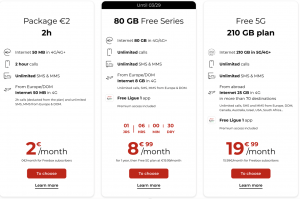
Depending on the package you get, you are able use up to 35 day’s worth of international calls , which include US landlines. This was super useful for when we had to call hostel owners abroad in order to check in or other uses for emergencies. Additionally, having the international component makes it much easier to receive international texts and other confirmation codes you might need to apply for Passenger Locator Forms in you’re flying into different countries or sometimes even getting the verification code for renting scooters and bikes. It can also be a hotspot for your computer if you need to get assignments done on the train or for others to leech off of if needed.
Buying a Free Mobile sim card is easy. There is a store right next to the CDG airport in the local mall where you can register for a new French number at a kiosk. After getting a new number, you can start using your French sim card immediately. The only downside is that the kiosk is entirely in French but here’s a thorough walk through on how to use the kiosk.
https://tabiparislax.com/en/freemobile-2/
Now, when you first arrive in Paris, you might be tempted to buy from the sim card vendors within the actual airport. DO NOT! Those rates are ridiculously inflated for just a few GB of data. Some of these vendors may be Orange, SFR, or Bouygues, but comparatively, Free Mobile has the best rates for data you are getting and its extensive coverage outside of France as well.
Overall, Free mobile has been a lifesaver on many of my trips, and I highly recommend that you get a French sim card. The only thing is, remember to cancel your subscription before you leave!

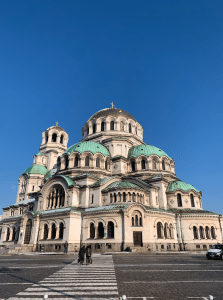 Bulgaria was a place with very rich history and deep national pride. Their cultural norms were rooted for centuries, passed down from family and family. And one of the first influences I noticed was the presence of Eastern Orthodox churches and mosques. Located in the heart of Sofia is St. Alexander’s Basilica. Its brutal architecture featured green and golden domes with large, arche
Bulgaria was a place with very rich history and deep national pride. Their cultural norms were rooted for centuries, passed down from family and family. And one of the first influences I noticed was the presence of Eastern Orthodox churches and mosques. Located in the heart of Sofia is St. Alexander’s Basilica. Its brutal architecture featured green and golden domes with large, arche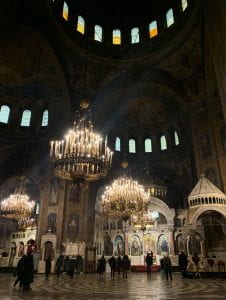 Inside, the atmosphere was even more unique. As we slowly entered, many Bulgarians would bow at the entrance and before the cross while performing the traditional Catholic crossbody hand gestures. The Basilica itself was very dimly lit with giant chandeliers that hung lowly from the ceiling. Paintings along the walls had darker undertones, featuring a more gothic approach than the fresh rococo style seen in Spain or Italy. There was a priest standing at the front of the sanctuary reading script in worship. His low, melodic yet monotone voice sent shivers down my spine. It was unlike anything I’ve seen or heard before.
Inside, the atmosphere was even more unique. As we slowly entered, many Bulgarians would bow at the entrance and before the cross while performing the traditional Catholic crossbody hand gestures. The Basilica itself was very dimly lit with giant chandeliers that hung lowly from the ceiling. Paintings along the walls had darker undertones, featuring a more gothic approach than the fresh rococo style seen in Spain or Italy. There was a priest standing at the front of the sanctuary reading script in worship. His low, melodic yet monotone voice sent shivers down my spine. It was unlike anything I’ve seen or heard before.
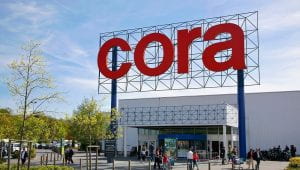 This is the biggest market in Metz and its definitely one you can’t miss. Basically a Walmart and Target combined into a Costco sized warehouse, Cora is the place to find anything you ever need. There are huge selections of housewares, clothing, pastries, meats, and drinks of all sorts. While prices are not much cheaper than those back in Atlanta, it depends on the meats, fruits, and veggies you end up buying. Tropical fruits, such as strawberries, grapes, and mangos are very expensive, almost 1.5 the price than we usually see at home. Meat cuts include parts from all parts of cows, pigs, and chicken, but the one thing you want to keep in mind when selecting cheaper meat is the date of consumption. Many times, the meats must be eaten within the next 1-3 days, so if you’re traveling on the weekend, it’s best to buy the groceries after you return. Overall, Cora scores a 10/10 on the scale. It has almost everything I ever needed and while it’s a 30-minute walk from Lafayette, with the metro pass, you can get there in a matter of minutes.
This is the biggest market in Metz and its definitely one you can’t miss. Basically a Walmart and Target combined into a Costco sized warehouse, Cora is the place to find anything you ever need. There are huge selections of housewares, clothing, pastries, meats, and drinks of all sorts. While prices are not much cheaper than those back in Atlanta, it depends on the meats, fruits, and veggies you end up buying. Tropical fruits, such as strawberries, grapes, and mangos are very expensive, almost 1.5 the price than we usually see at home. Meat cuts include parts from all parts of cows, pigs, and chicken, but the one thing you want to keep in mind when selecting cheaper meat is the date of consumption. Many times, the meats must be eaten within the next 1-3 days, so if you’re traveling on the weekend, it’s best to buy the groceries after you return. Overall, Cora scores a 10/10 on the scale. It has almost everything I ever needed and while it’s a 30-minute walk from Lafayette, with the metro pass, you can get there in a matter of minutes. 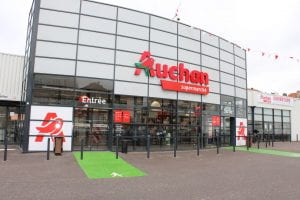 Auchan is a smaller chain supermarket that is closer to Lafayette than Cora. It sells mostly the same things and brands, but overall, Auchan has higher quality pastries and good budget food items. While the veggies selection is not as diverse, it specializes in lot of bio or organic produce that are slightly cheaper than the ones at Cora. From my experience, it is best to go to Auchan earlier in the day when things have been stocked up and when the bakeries just restock on their fresh breads. It scores brownie points for its convenient location and accessibility to Lafayette. Finally, most French groceries stores are highly plastic conscious, so you’ll have to bring your own bags!
Auchan is a smaller chain supermarket that is closer to Lafayette than Cora. It sells mostly the same things and brands, but overall, Auchan has higher quality pastries and good budget food items. While the veggies selection is not as diverse, it specializes in lot of bio or organic produce that are slightly cheaper than the ones at Cora. From my experience, it is best to go to Auchan earlier in the day when things have been stocked up and when the bakeries just restock on their fresh breads. It scores brownie points for its convenient location and accessibility to Lafayette. Finally, most French groceries stores are highly plastic conscious, so you’ll have to bring your own bags! 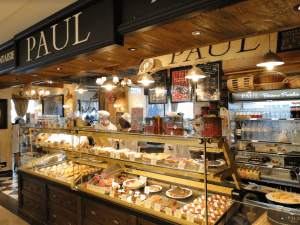 For new French pastry connoisseurs, Paul’s is the perfect place to start exploring. Located just 5 minutes away from GTL, Paul’s has a huge collection of coffees, breads, tarts, and ready-made food just for your convenience. For my first time at Paul’s, I tried their pain au chocolat, a classic French delicacy with chocolate folded into crispy, buttery goodness. Their tarts are amazing with fresh berries and a glaze that isn’t too sweet but also not too sour. Their freshly made baguettes in the morning are perfect for cheese and jam. Overall, the prices are comparable to those in Cora, so you might as well try out what they have and expand your horizons. There are also many tables set up inside for you to get your work done, in an ambient, cozy environment with your favorite pastries. While taste is good, the waiter experience was slightly awkward when we first visited there. If you do not know French, you might want to touch up on some of your basic French phrases before heading over.
For new French pastry connoisseurs, Paul’s is the perfect place to start exploring. Located just 5 minutes away from GTL, Paul’s has a huge collection of coffees, breads, tarts, and ready-made food just for your convenience. For my first time at Paul’s, I tried their pain au chocolat, a classic French delicacy with chocolate folded into crispy, buttery goodness. Their tarts are amazing with fresh berries and a glaze that isn’t too sweet but also not too sour. Their freshly made baguettes in the morning are perfect for cheese and jam. Overall, the prices are comparable to those in Cora, so you might as well try out what they have and expand your horizons. There are also many tables set up inside for you to get your work done, in an ambient, cozy environment with your favorite pastries. While taste is good, the waiter experience was slightly awkward when we first visited there. If you do not know French, you might want to touch up on some of your basic French phrases before heading over. 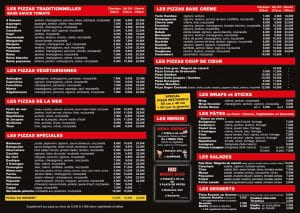 Funny enough, Mamma Mia
Funny enough, Mamma Mia 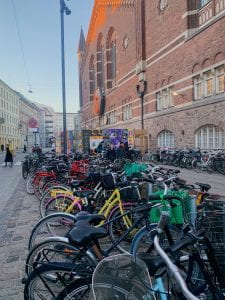 Bikes:
Bikes: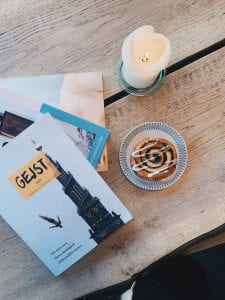
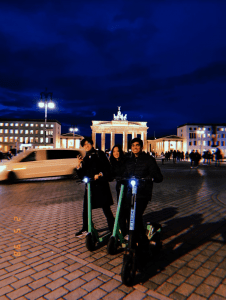 block.
block.  For the nature enthusiasts, hiking is always a cheap option that you can tailor to your experiences and preferences. Many big cities in Europe are located next to mountainous regions or along the coast. For example, if you travel to Marseille in France, you can scale the Calanques for a whole day without spending a single cent. In many of the port cities, you can find rocky outcrops to bask in the sunlight or take a stroll along the beach. If you’re in Italy or Portugal, there are many lakes such as Lake Como or the Benagil Caves that you can spend your afternoon exploring. While extra activities such as mountain biking or sea kayaking may cost 10-30 euros, the views are spectacular and worth the cost.
For the nature enthusiasts, hiking is always a cheap option that you can tailor to your experiences and preferences. Many big cities in Europe are located next to mountainous regions or along the coast. For example, if you travel to Marseille in France, you can scale the Calanques for a whole day without spending a single cent. In many of the port cities, you can find rocky outcrops to bask in the sunlight or take a stroll along the beach. If you’re in Italy or Portugal, there are many lakes such as Lake Como or the Benagil Caves that you can spend your afternoon exploring. While extra activities such as mountain biking or sea kayaking may cost 10-30 euros, the views are spectacular and worth the cost. 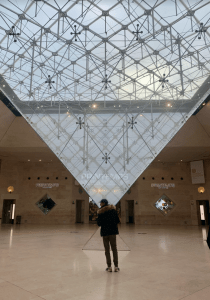 As a student, you’re in luck. Many museums such as the Prado in Madrid are free for students on certain weekends. If they are not free, exhibition tickets are often sold at a discounted rate if you have your ISIC card on you. These museums often hold gems of modern, historical art, and they can eat up a whole day of activities if you’re interested. Not only are these museums specific to the region, they also have different exhibitions every month.
As a student, you’re in luck. Many museums such as the Prado in Madrid are free for students on certain weekends. If they are not free, exhibition tickets are often sold at a discounted rate if you have your ISIC card on you. These museums often hold gems of modern, historical art, and they can eat up a whole day of activities if you’re interested. Not only are these museums specific to the region, they also have different exhibitions every month. 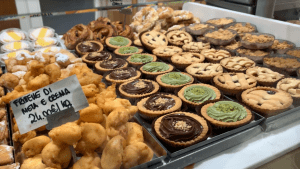 For the foodies, a cheap way to try local foods is to go bakery hopping. Many small goodies cost one or two euros and are pretty filling. They also represent the local cuisine with each baked good. For example, in Faro, Portugal, we tried Portuguese egg tarts that are a euro and custard sponge cakes, which the locals were crazed about. In Italy, we also had cheap cannolis and pistachio buns for under a euro. In Como, they sold pastries by the bag, and we lived off them for only 7 euros throughout the entire day.
For the foodies, a cheap way to try local foods is to go bakery hopping. Many small goodies cost one or two euros and are pretty filling. They also represent the local cuisine with each baked good. For example, in Faro, Portugal, we tried Portuguese egg tarts that are a euro and custard sponge cakes, which the locals were crazed about. In Italy, we also had cheap cannolis and pistachio buns for under a euro. In Como, they sold pastries by the bag, and we lived off them for only 7 euros throughout the entire day. 
